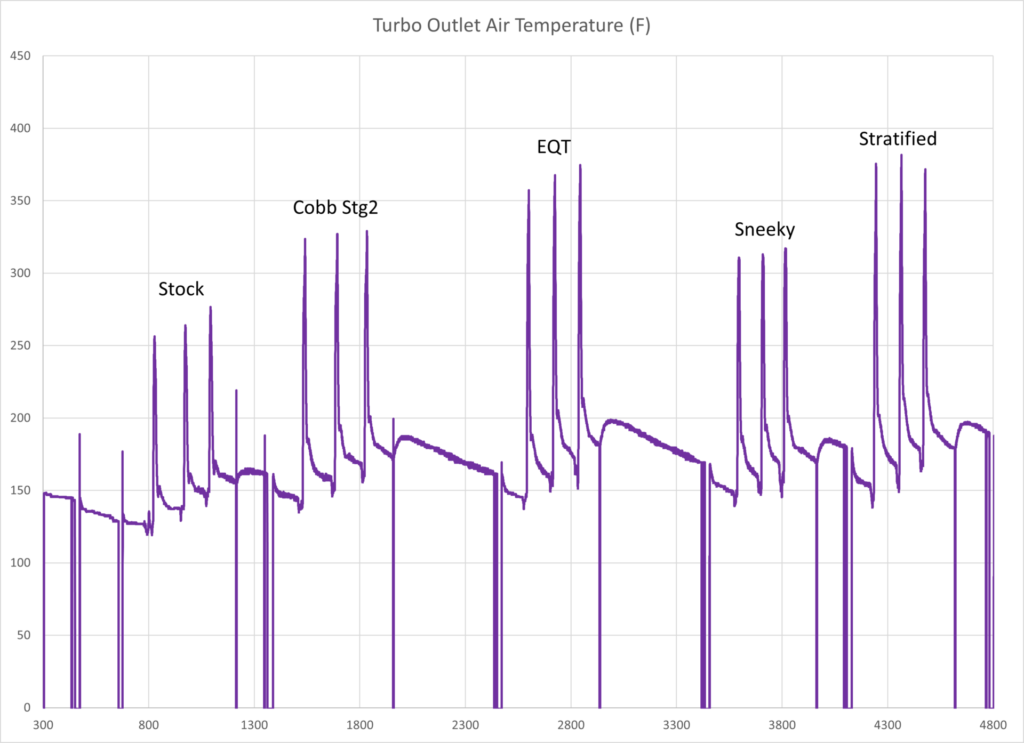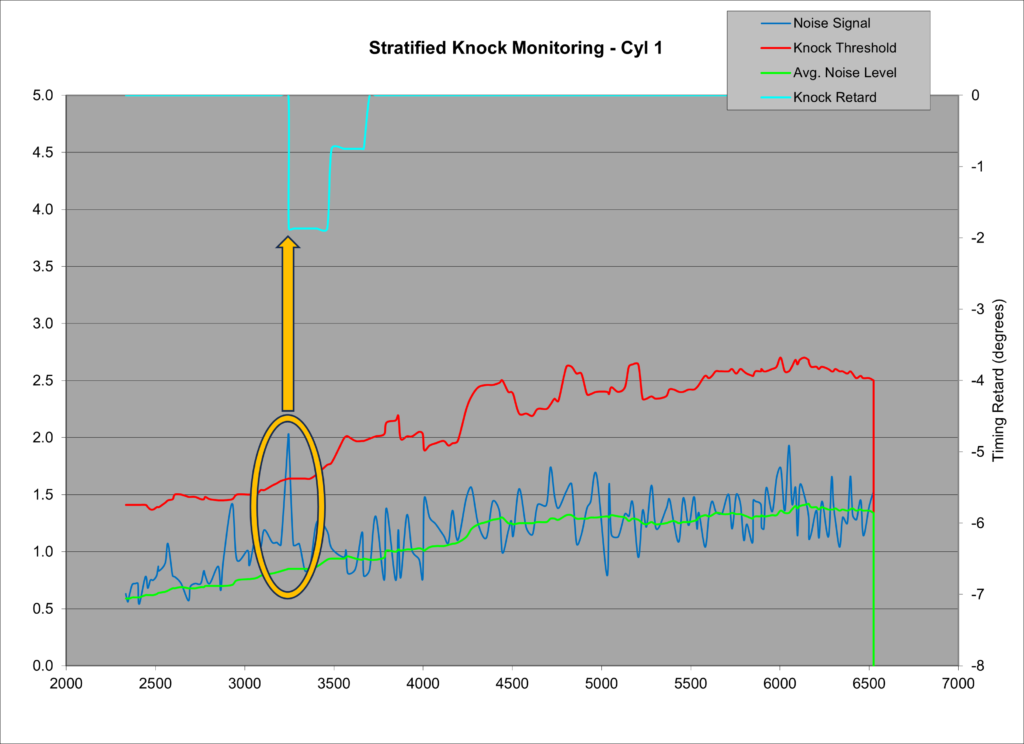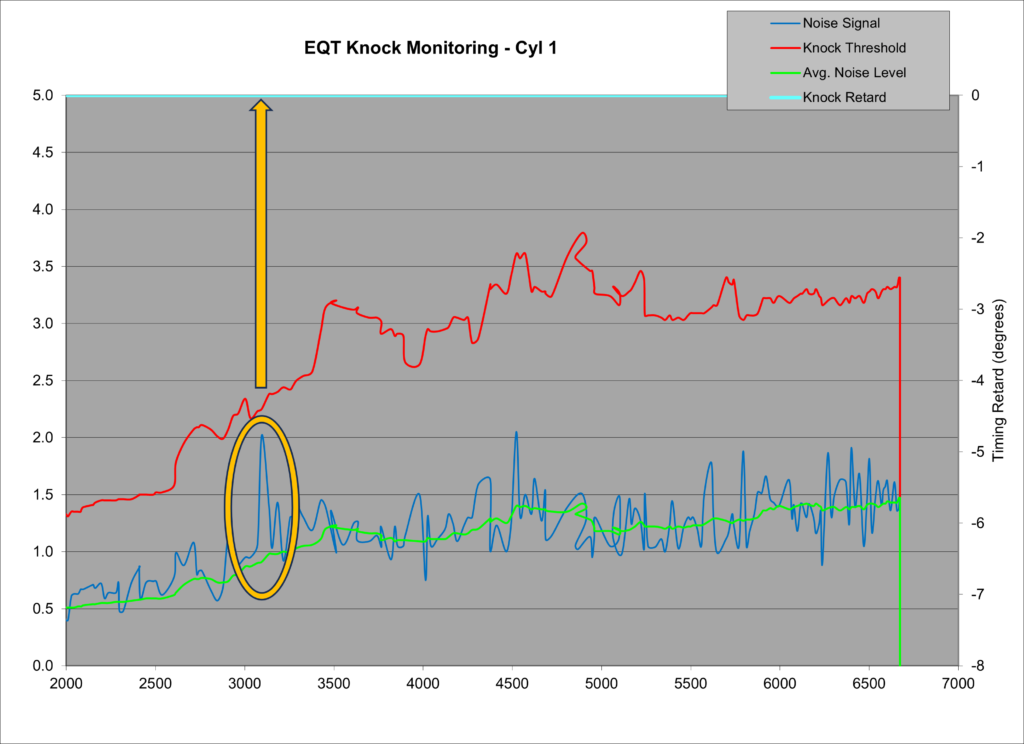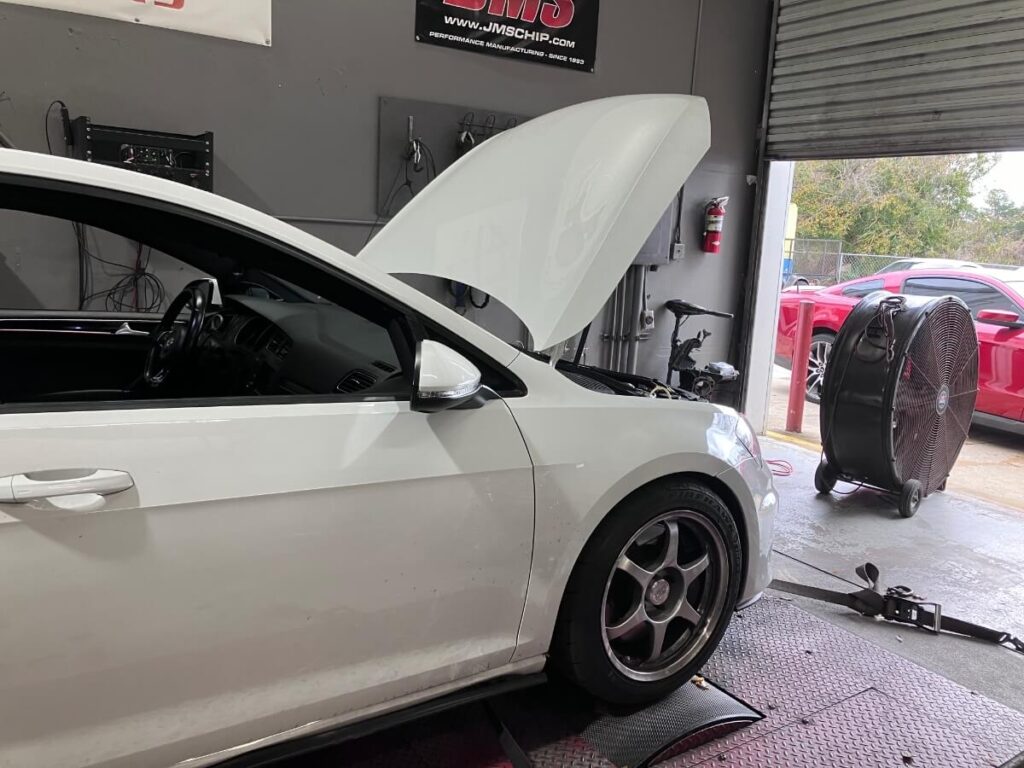
Dynamometer Data Collection:
Note: Data for each tune is shown individually on this page.
Average WHP Chart – Summarizing Three Pulls:
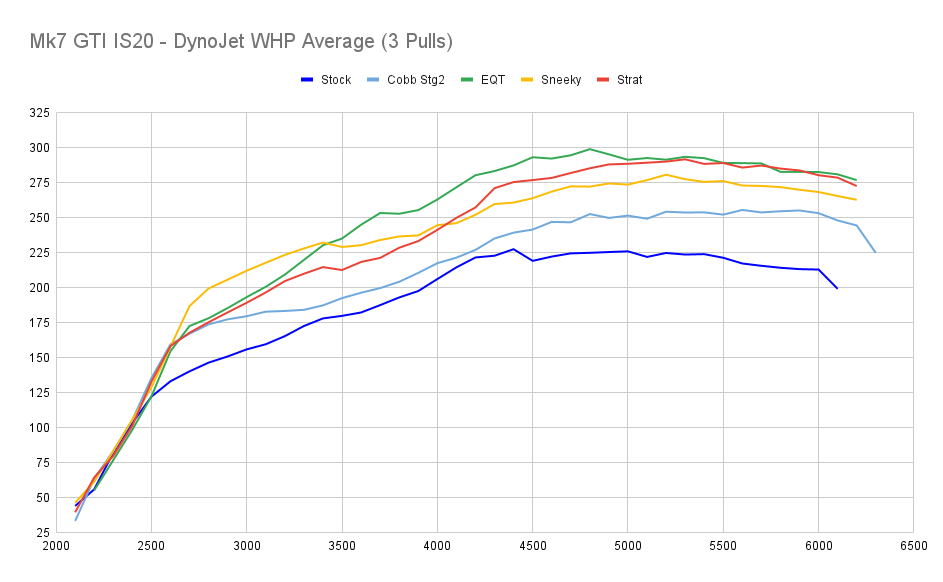
Average WTQ Chart – Summarizing Three Pulls:
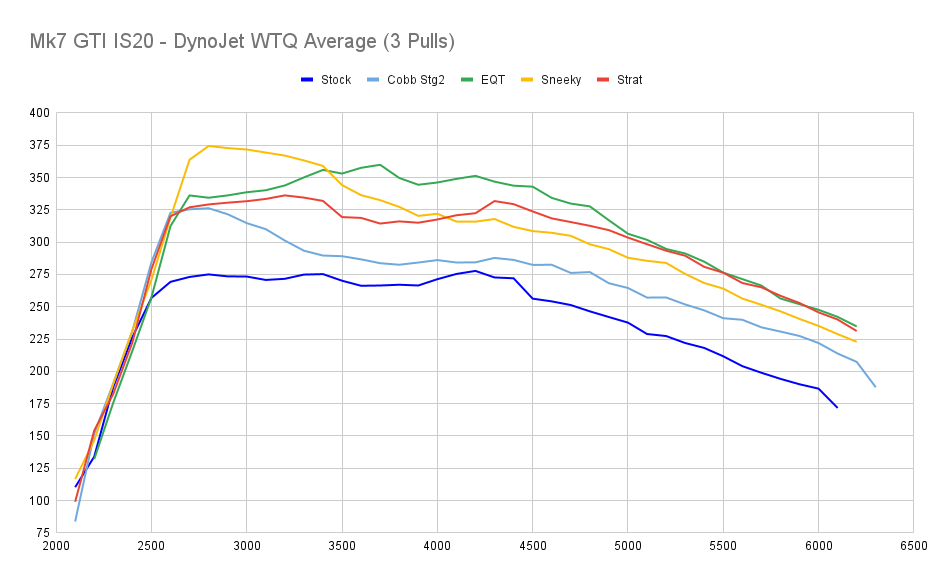
3 Pull Average Peak WHP Comparison:
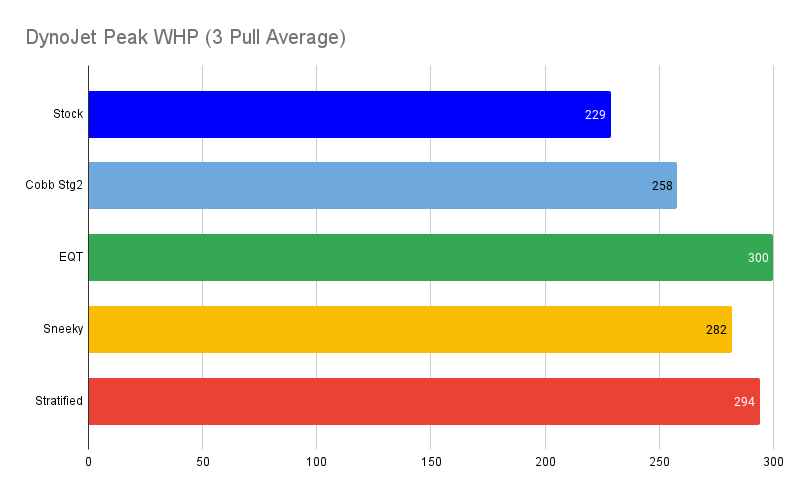
3 Pull Average Peak WTQ Comparison:
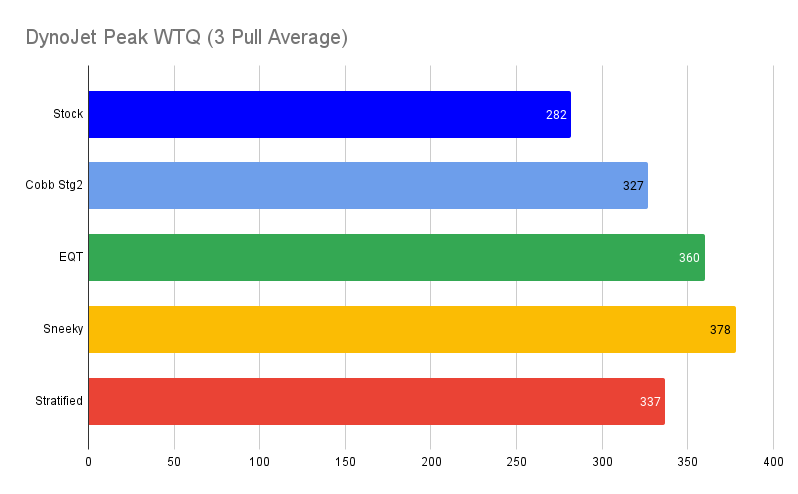
Primary Engine Variables
Average AFR
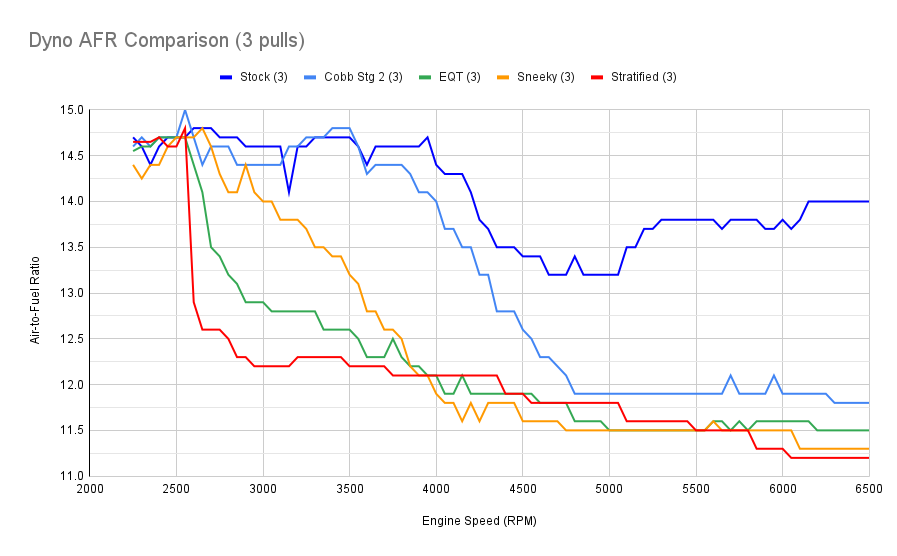
Average Boost

Average Timing
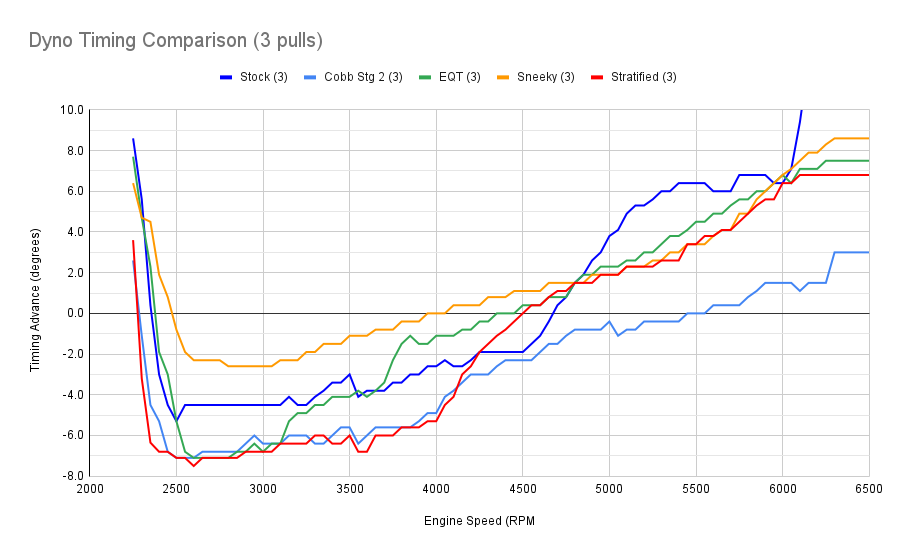
4th Gear Noise Thresholds:
This section addresses the engine noise level on the dyno in fourth gear. The topic of noise level and the relationship with knock (detonation) are discussed in detail on this page.
Click below to show a brief overview of the relationship between noise levels, the noise threshold, and ECU safety measures.
Knock Sensor Numbing
In the next charts, the amount of Knock Sensor Numbing relative to the OEM values is shown. Higher percentages indicate a greater “numbing” of the Knock sensors compared to the OEM safety margins, increasing the probability of engine knock not being addressed by the ECU.
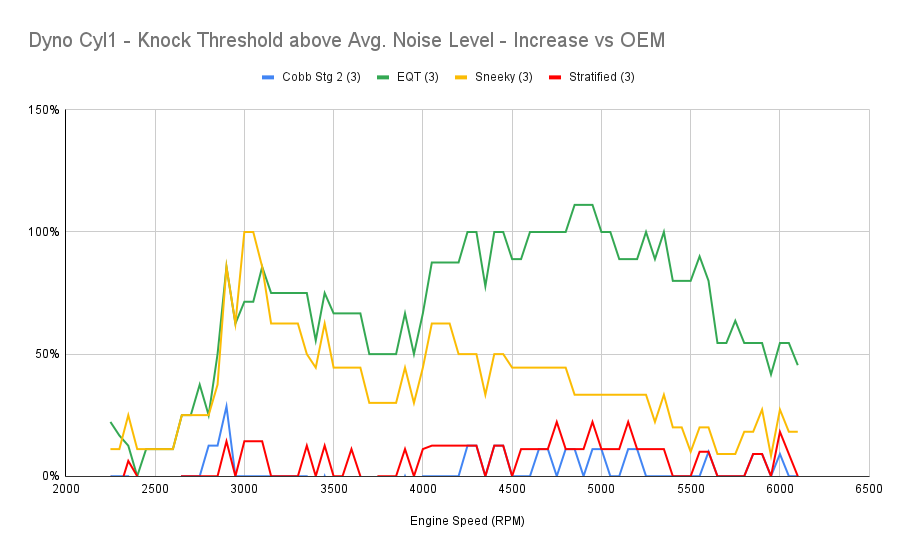
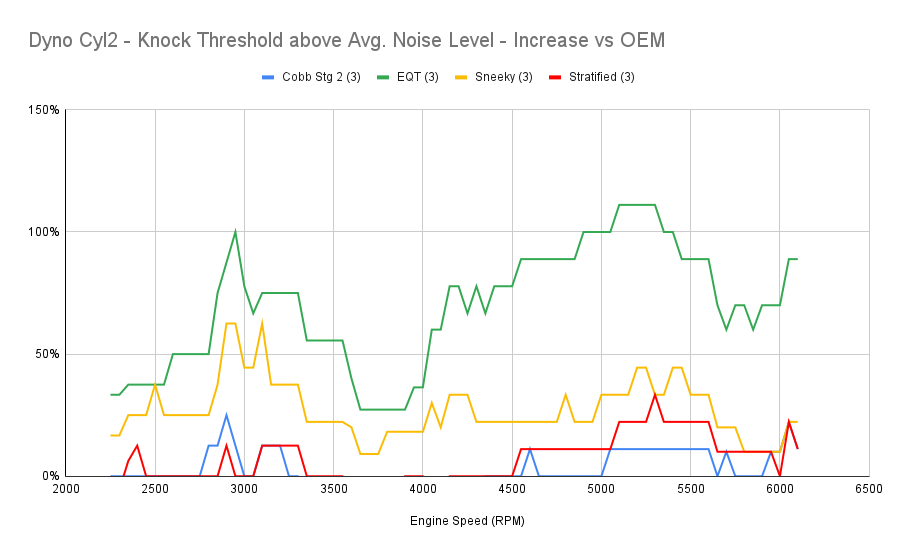
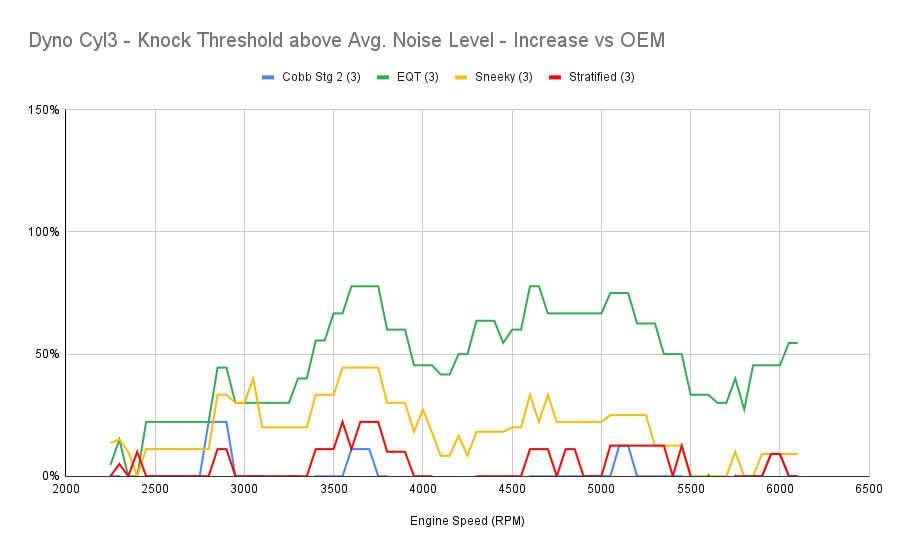
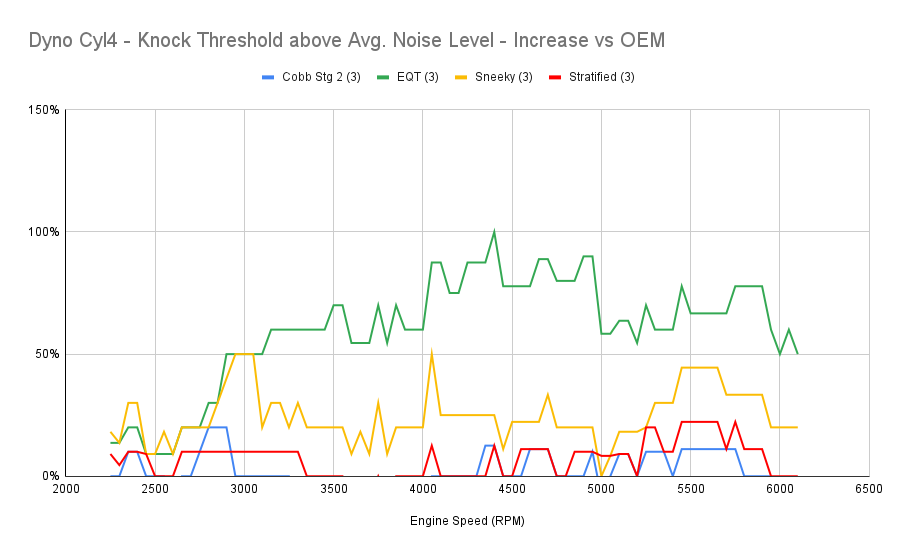
Turbocharger Discharge Air Temperature:
